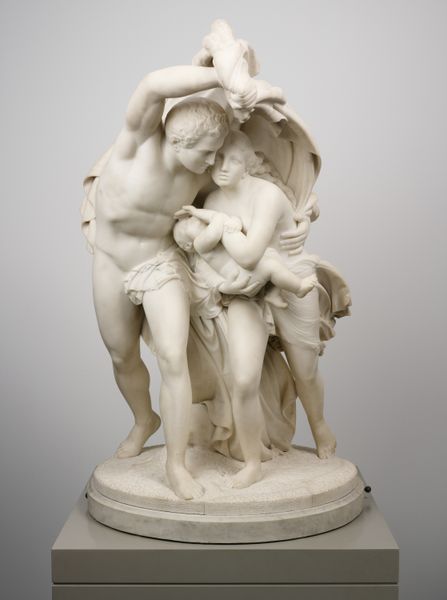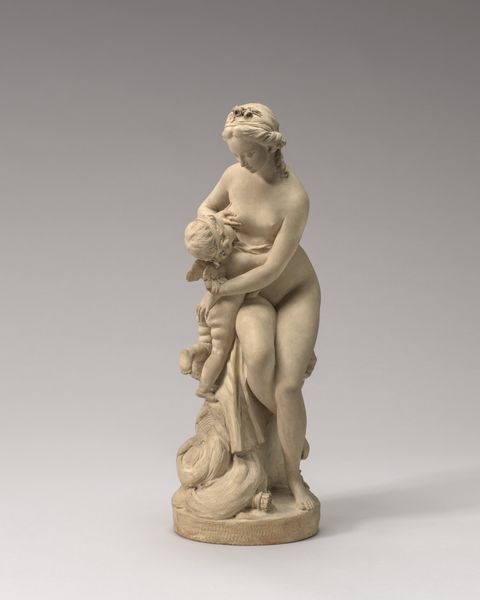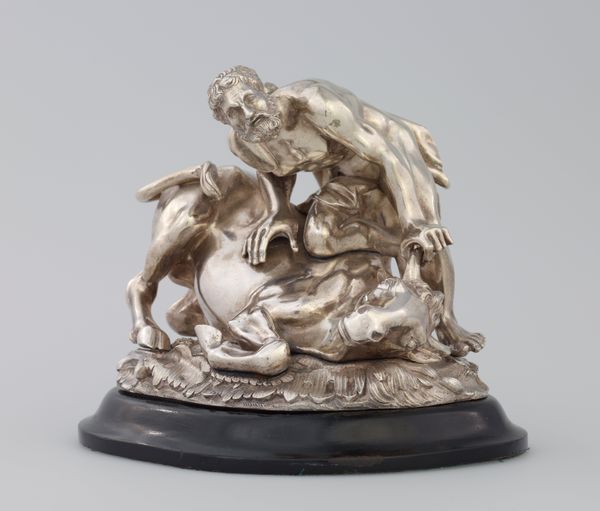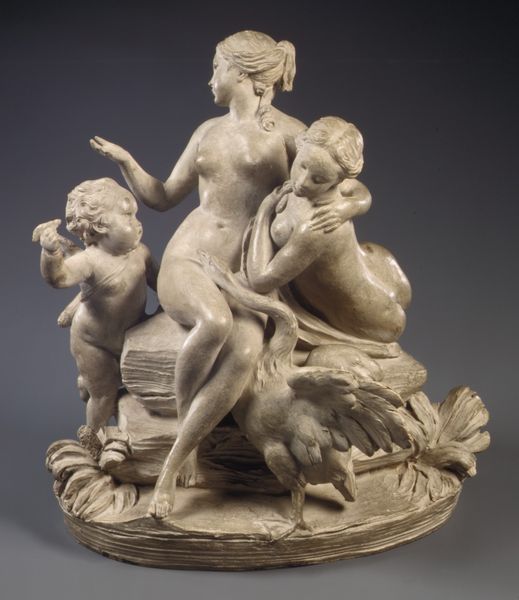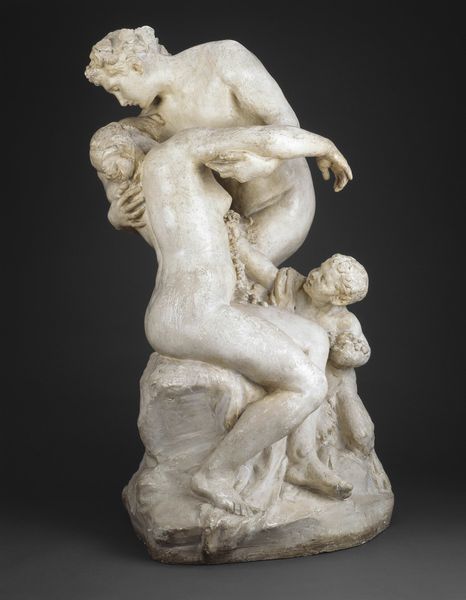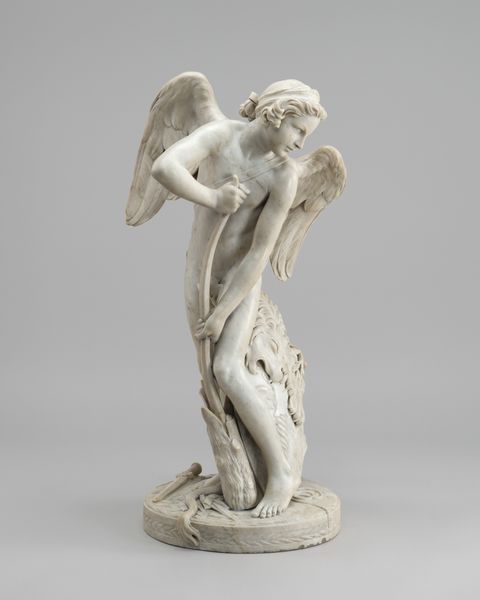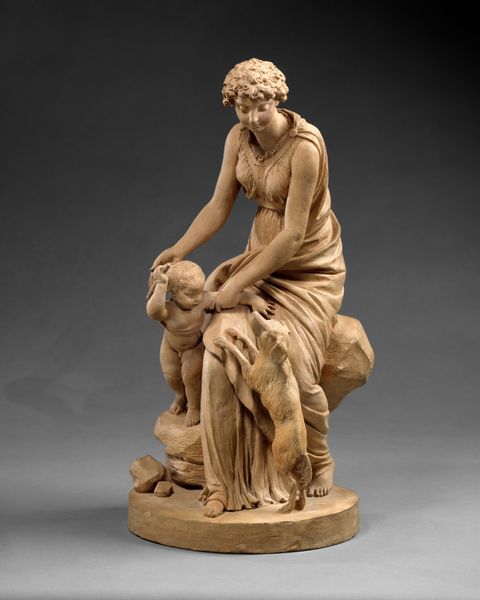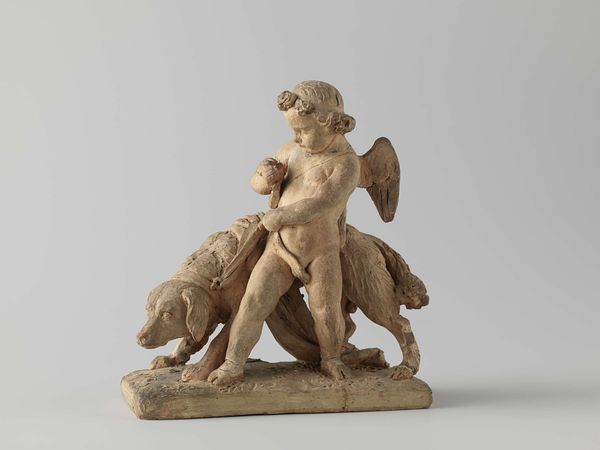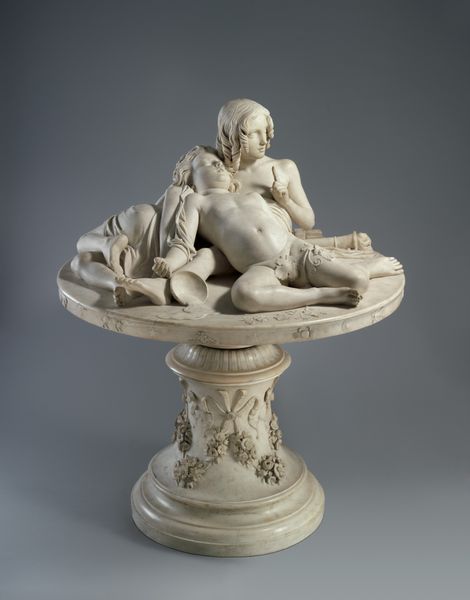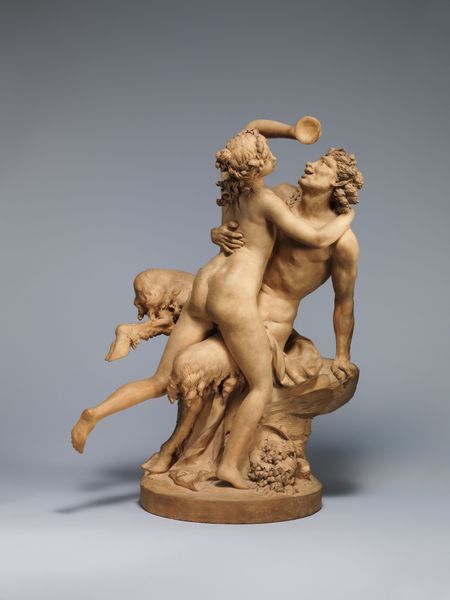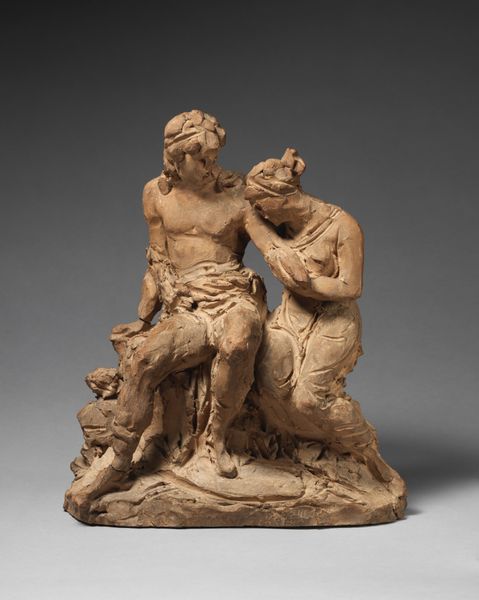
Dimensions: Height (without base): 14 1/2 in. (36.8 cm)
Copyright: Public Domain
Albert-Ernest Carrier-Belleuse rendered this terracotta sculpture, “Leda and the Swan,” sometime in the mid-19th century. The piece depicts the Greek myth of Leda, queen of Sparta, and her seduction by Zeus in the guise of a swan. This sculpture speaks to the revival of classical themes prevalent in European art academies of the time. But why this myth, and why now? The figure of Leda, sensuous and vulnerable, provided a safe vehicle for exploring notions of feminine beauty and desire. The sculpture would have been displayed in a domestic space; it may have served as a conversation piece or an emblem of cultivated taste. To truly understand this piece, one would look at the academic system that trained artists like Carrier-Belleuse, exploring how the curriculum, the prize system, and the patronage networks shaped artistic production. We can also explore how these classical myths spoke to the concerns and tastes of the rising middle class in 19th-century France.
Comments
No comments
Be the first to comment and join the conversation on the ultimate creative platform.
